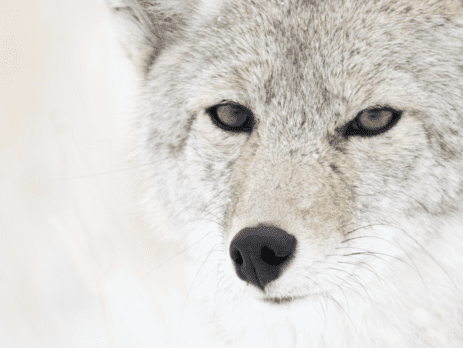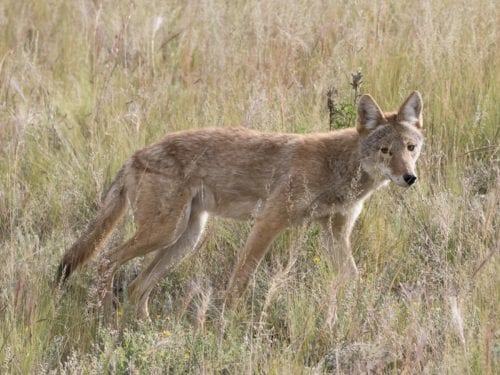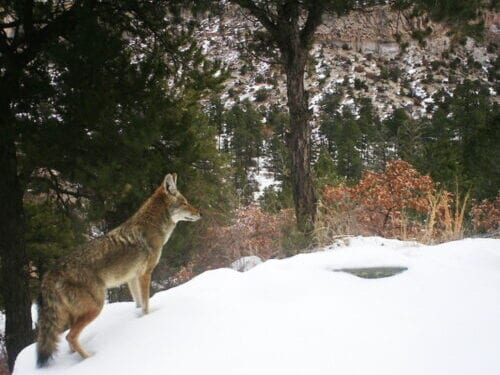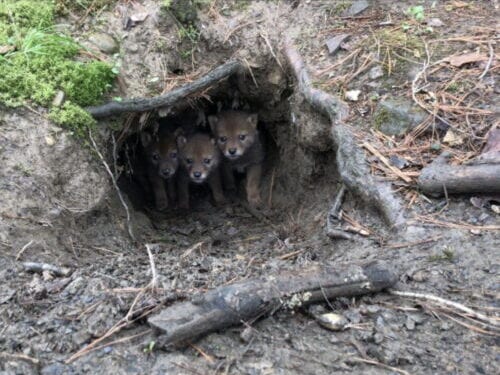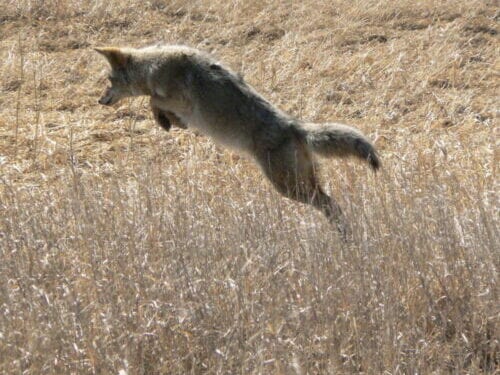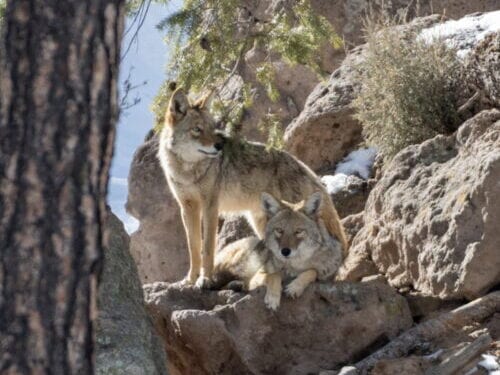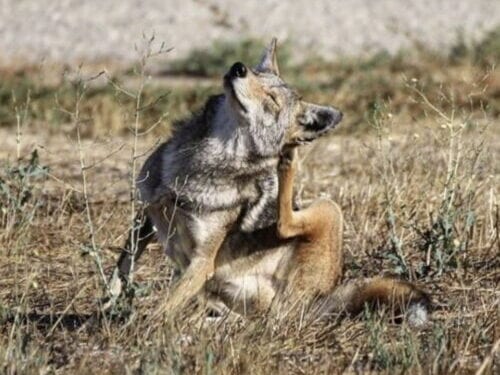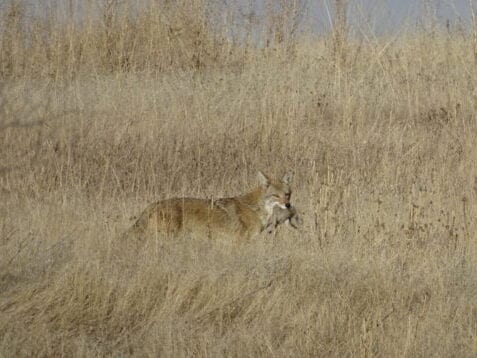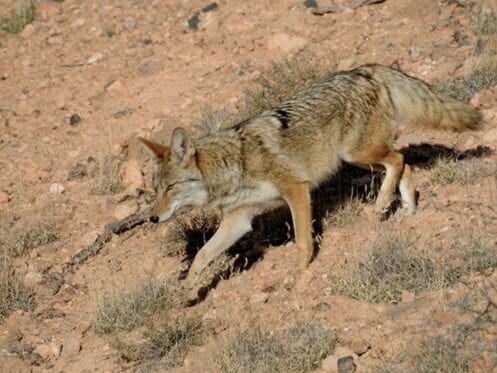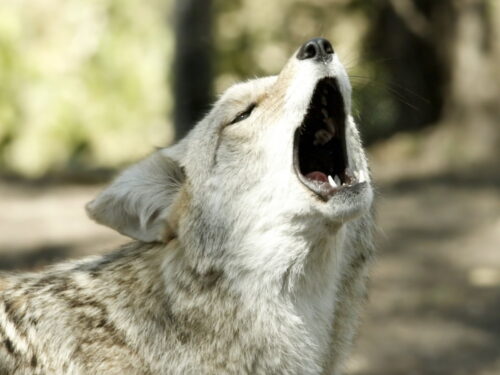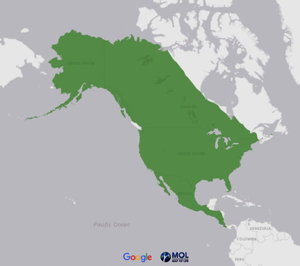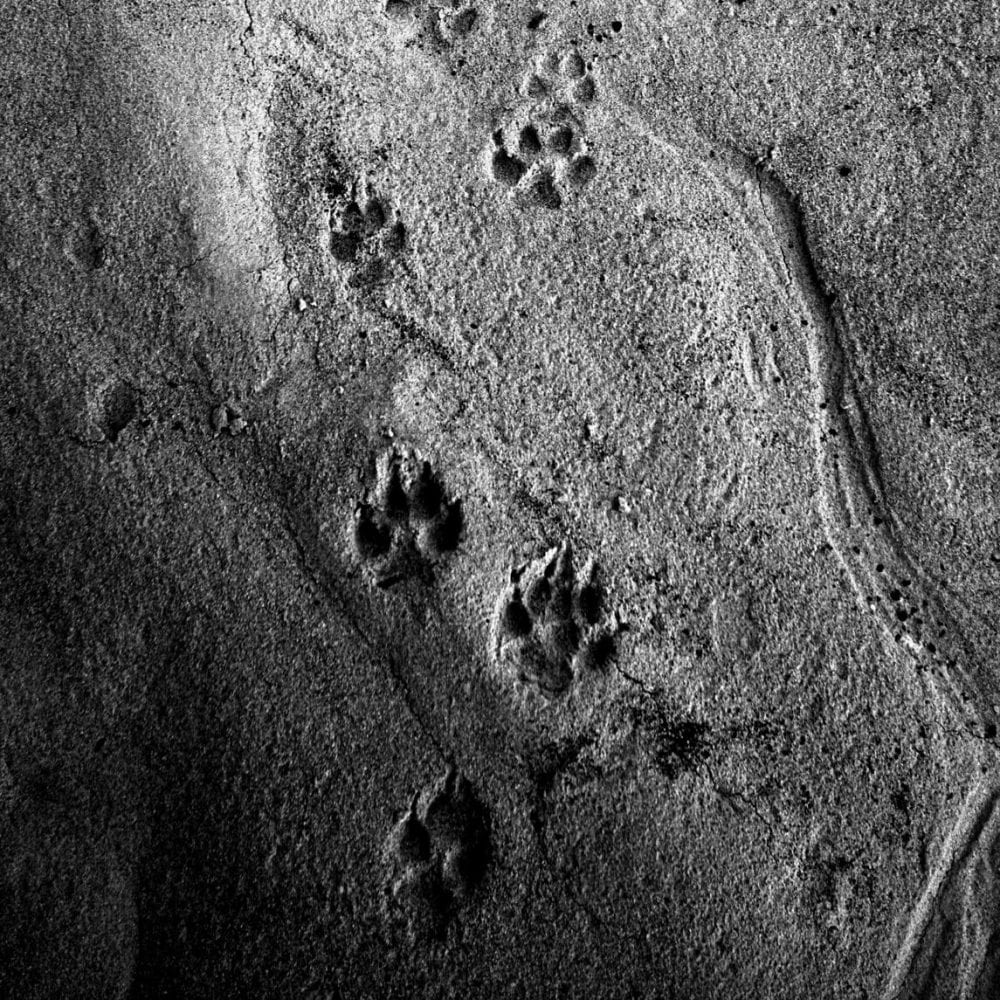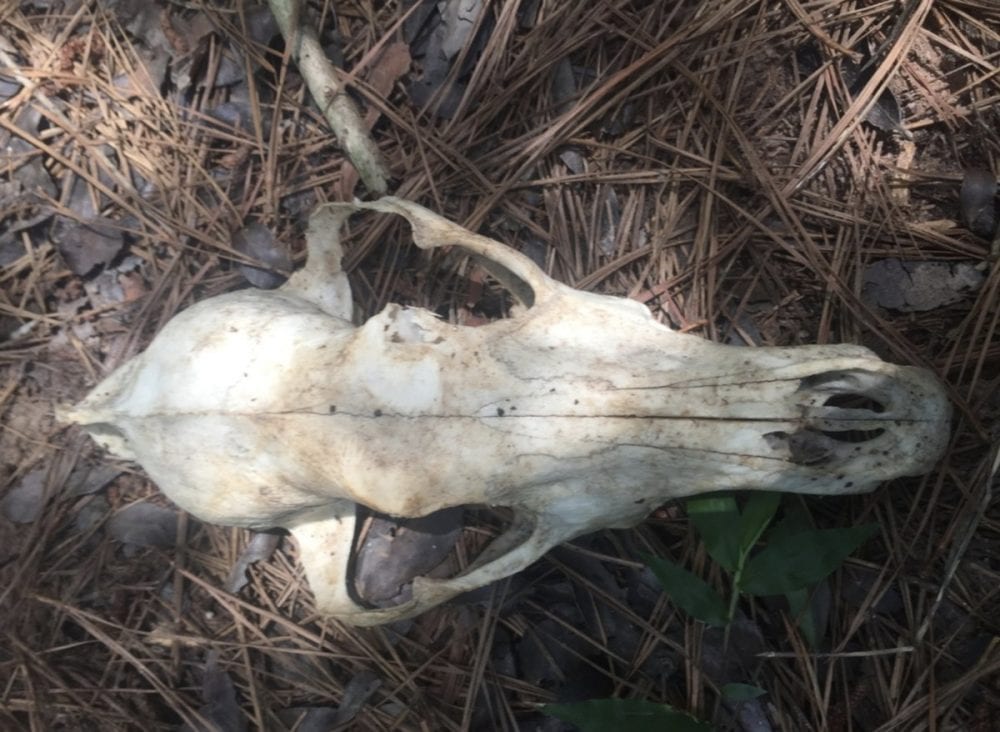Coyote
Scientific name: Canis latrans
Type: Mammal
Family: Canidae (Dog)
Size: About 2.5 to 2.8 feet long not counting the tail
Weight: 20 to 50 pounds
Life Span: Up to 14 years
Physical Description
Coyotes are canines that are similar in size to a medium-sized dog. Their fur is grayish to yellowish-brown on top and whitish on the underside.
Coyotes have a pointed muzzle, long ears that stand straight up, a black stripe along their spine, and a long, bushy tail with a black tip. They run with their tails down, unlike dogs that run with their tails up.
Range and Habitat
Coyotes are found in the United States, Canada and some parts of Mexico. They live in many different types of habitats from mountains to forests, grasslands, and deserts. Since coyotes do not mind being near humans, they can be found on farms and in towns.
Diet
Coyotes will eat snakes and lizards but prefer other mammals such as mice and squirrels. However, sometimes they will take larger ones like deer. In addition, they will eat fruits and vegetables and even garbage.
Behavior and Social Life
Coyotes are usually only out at night but can occasionally be seen during the day. Coyotes will hunt alone or as part of a family unit known as a pack. Hunting in packs allows them to kill larger animals. In addition, the pack is also important in defending a territory.
Coyotes live in dens which are typically enlarged burrows that were abandoned by other animals. Dens are used year after year and have several different entrances.
Coyotes are more often heard than seen. They make high-pitched howls, yips, and barks to communicate with each other. They are most active at night and in the early morning.
Life Cycle
Once a coyote finds a partner they often stay together for a number of years. They usually breed once a year some time between February and April. About two months after mating, the female gives birth with an average of six pups per litter. Both parents and pups live together in a den.
Pups will start to leave the den when they are about a month old and will eat regurgitated food brought to them by both parents. Male pups leave their mothers when six to nine-months old; whereas female pups stay with the mother’s pack.
Ecological Role
As a top predator, coyotes help control the number of rodent pests. In addition, they help boost biodiversity by influencing the number of other predators in the ecosystem.
Interactions With Humans
It is very rare for a coyote to attack a person. However, they will kill livestock like sheep and even pets.
Interesting Facts
- Coyotes can run up to 40 miles per hour.
- Unlike dogs, they run with their tails down.
- Coyotes can jump up to 12 feet.
- They are good swimmers but poor climbers.
- Coyotes rarely build their own dens.
- They can make 11 different noises.
- Males are slightly larger than females.
- Coyotes can breed with wolves and domestic dogs.
- In colder climates coyotes usually have light grey fur.
- In warmer climates coyotes tend to have reddish fur.
- The coyote symbolizes a trickster for some Native American cultures.
- Coyotes can stand on their toes like humans.



